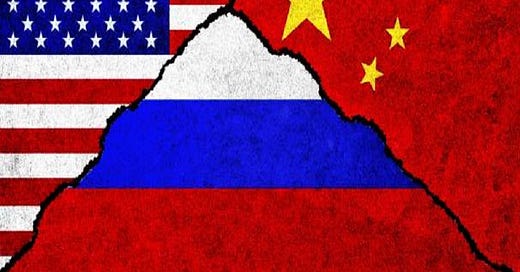Interpreting Russia, The US, & China’s Latest Military-Diplomatic Activity In South Asia
These three extra-regional Great Powers’ independently organized moves confirmed this region’s importance in the global systemic transition.
Russia, the US, and China all engaged in their own military and/or diplomatic activity in South Asia across the past week. Russia carried out its first-ever naval drills with Myanmar, sent ships to Bangladesh for the first time in half a century, and then held military-diplomatic talks with India. The third event came shortly after the latest 2+2 military-diplomatic talks between the US and India. Finally, the ongoing Chinese-Pakistani naval drills rounded out the flurry of activity that just took place in the region.
Beginning with Russia’s most recent moves, it signaled interest in bolstering Myanmar’s balancing act vis-à-vis China, tacitly expressed support for Bangladesh amidst US pressure ahead of January’s elections, and comprehensively reviewed its ties with India. The last of these developments precedes their annual summit in December and followed Valdai Club’s Andrey Sushentsov urging them a few weeks back to brainstorm the next “big idea” for shaping the future of their strategic partnership.
Moving along to the US’ motives, their 2+2 talks were aimed at building upon the related agreements reached between Prime Minister Modi and President Biden during the former’s trip to DC last June. Although planned far in advance, their timing served to reassure India that the US’ support of Canada in those two’s spiraling dispute over an assassinated terrorist-designated Sikh separatist won’t impede grand strategic cooperation on shared military-diplomatic goals, which arguably concern China.
Much less impactful in the overall sense but nonetheless important, China’s naval drills with Pakistan – which were also planned in advance but coincidentally took place during the same week as Russia and the US’ latest military-diplomatic activity in South Asia – reminded everyone that it’s a regional player. Those two’s China-Pakistan Economic Corridor (CPEC) remains BRI’s flagship project, and their decades-long strategic partnership understandably continues to influence India, Russia, and the US’ calculations.
Altogether, these three extra-regional Great Powers’ independently organized military-diplomatic moves in South Asia confirmed this region’s importance in the global systemic transition. All such processes are converging in the subcontinent at an accelerated pace due to India’s rapid rise as a globally significant Great Power, that country’s geostrategic balancing act between the world’s top players, and South Asia’s pivotal location at the center of the Eastern Hemisphere within which the New Cold War is being waged.




